THE ZVILLER REBBE
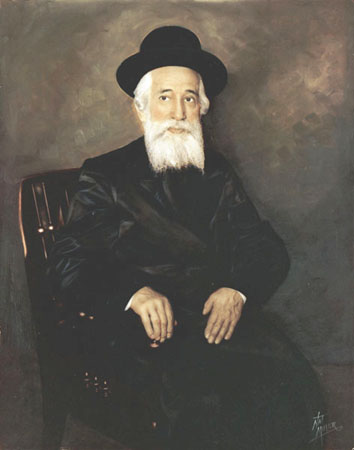
|
GRAND RABBI JACOB ISRAEL KORFF: THE ZVILLER REBBE |
|
During the last years of his life, Rabbi Jacob Korff suffered from an acute case of spinal arthritis, anemia, diabetes, and cardiac illness. He passed away on Saturday, September 27,1952, in New England Deaconess Hospital at the age of 69, after undergoing three major operations the previous month. Rabbi Korff did not want to die on the Sabbath. He held off death until his son, Rabbi Samuel Korff, completed the Havdaleh service, signifying the end of the Sabbath. He indicated to Samuel with his eyes that his mind was clear and so Samuel recited the Vidui, the prayer that is spoken when a person dies. Then the rebbe gave a sigh of relief and expired.
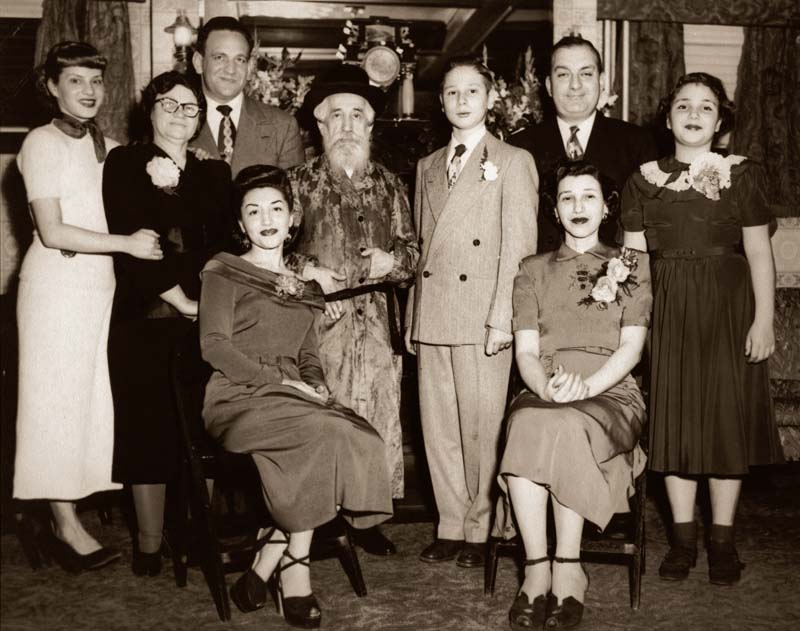 |
|
Grand Rabbi Jacob Korff lived long enough to celebrate the Bar Mitzvah of his grandson Paul Gass. Front: left to right: Betty Korff Berkowitz, Adele Korff Gass; second row: Pauline Korff Kerber, Etta Korff, Rabbi Jacob Korff, Paul Gass, Janet Gass; Back: Walter Berkowitz, Max Gass |
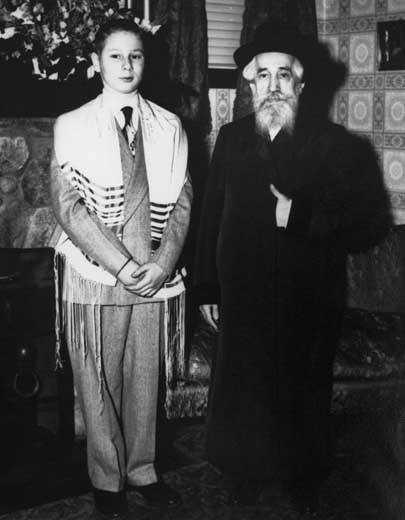 |
|
Bar Mitzvah boy Paul Gass with his grandfather Grand Rabbi Jacob Korff after the ceremony |
His body was returned to the chapel in his home on Woodrow Avenue and prepared for burial in a procedure called Tahara (purification). The body was carefully washed from head to toe while appropriate prayers were recited, and then it was wrapped in the white kittel (robe) that the rebbe had worn on Rosh Hashanah, Yom Kippur, and Passover. His tallit was draped over the kittel and one of the tzitziot (fringes) was removed as sign that Grand Rabbi Jacob Korff was no longer bound by the commandments of the Torah. Amid numerous candelabra, the rabbi’s body was never left unattended from the time of his death until his burial. This was in accordance with Jewish tradition as a sign of respect.
Approximately 300 rabbis visited the chapel and recited prayers, and selections from the Book of Psalms in a special service of consecration reserved for those who lead a saintly life. This special service began at the time of his death and ended when he was buried the next day. More than 5,000 mourners came to pay their respects but most could not get into the chapel.
According to his obituary in the Boston Globe: [1]
"Governor Dever and Mayor Hynes headed the official list of mourners, entering the congregation for a last tribute to Rabbi Korff before his body, placed in a pine box fashioned during the night and glued together, was ‘given over to his people’ for a procession through Dorchester and Mattapan streets before being transferred to Everett for burial.
“Thousands lined the streets as the body was borne by relays of the faithful through Woodrow Avenue, Ashton Street, Columbine Street, Blue Hill Avenue to Calendar Street where the casket was placed in a hearse.
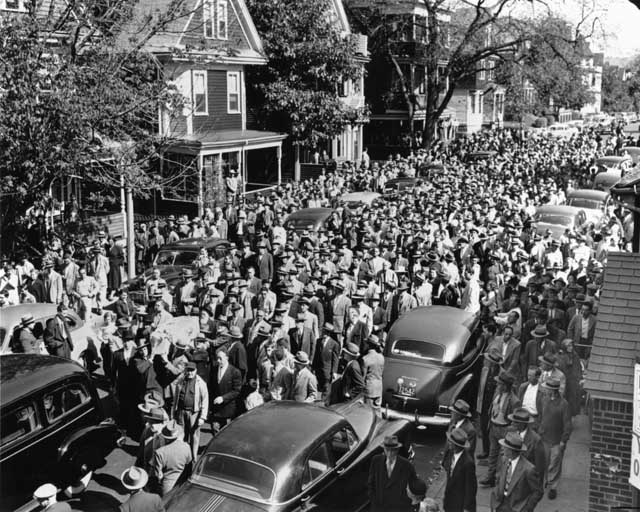 |
|
Grand Rabbi Jacob Korff’s funeral |
“During the procession and ride to the cemetery, stops were made at 12 synagogues while prayers were recited and the psalms intoned on the steps of temples."
Thousands of people followed the hearse to the burial site at Netzach Israel Cemetery in Everett. Pauline Korff Kerber’s husband Sidney recalls the funeral:
"When Grand Rabbi Korff passed away the family went to the cemetery in two cars. The men all piled into a big black limousine and the women all crammed into my father's old green Dodge with me in the driver's seat. I raced through Boston preceded by a police car with sirens blaring and the big black limousine. They could get through all the red lights and across the Mystic River Bridge without stopping for tolls. But every time we came to a red light I had to stop.”
Once all of his family, friends and followers were assembled Rabbi Korff was laid to rest in the family plot at Beth Israel cemetery.
This Ohel[2] was built over the final resting place of Grand Rabbi Jacob Israel Korff, signifying that he was a Tzadddik and Ish Kodosh, a righteous and holy person. It is an ancient custom of Jews to bring their troubles and prayer-requests to the graves of Tzaddikim and Kedoshim (righteous and holy people), especially on the eve of Yom Kippur and on their Yartzheit (anniversary of the death).
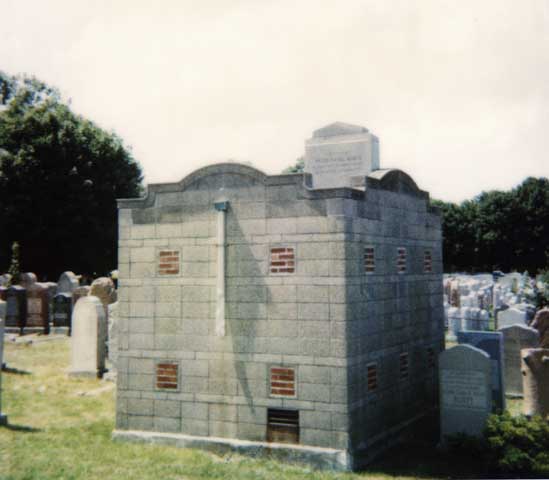 |
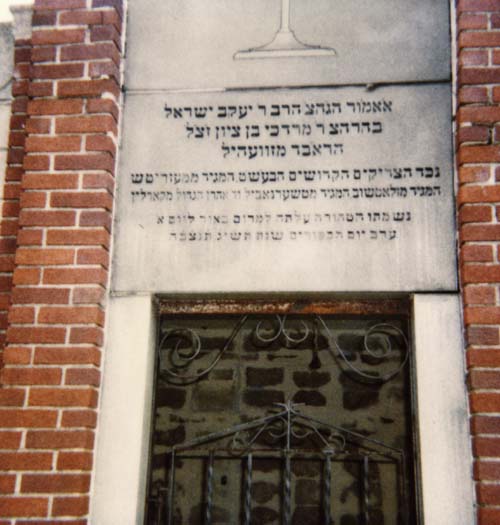 |
|
The final resting place of Grand Rabbi Jacob Korff |
Following his death, Rabbi Korff’s former congregants placed an entry in the Zvil Yizkor Book, which was published in Israel. This moving tribute, which has been liberally quoted throughout this chapter, indicated the love and respect with which Grand Rabbi Korff was remembered by his landsmen.[3]
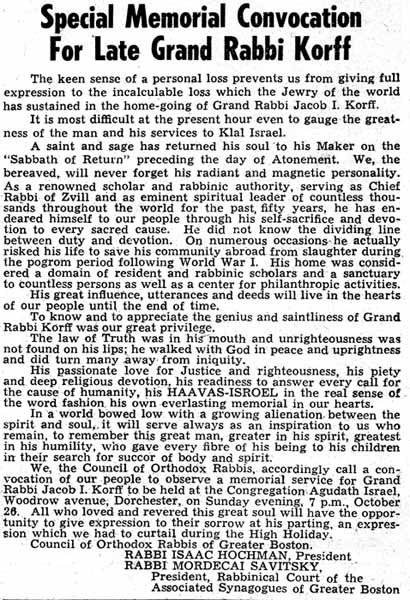 |
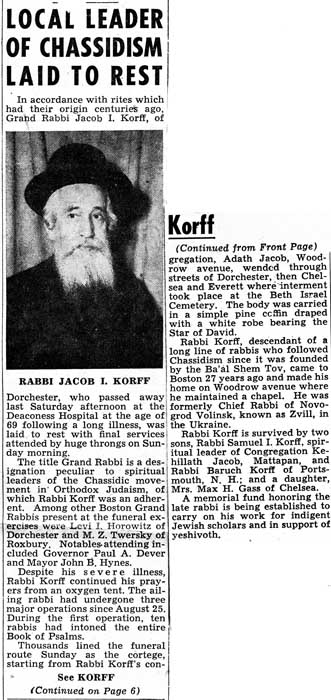 |
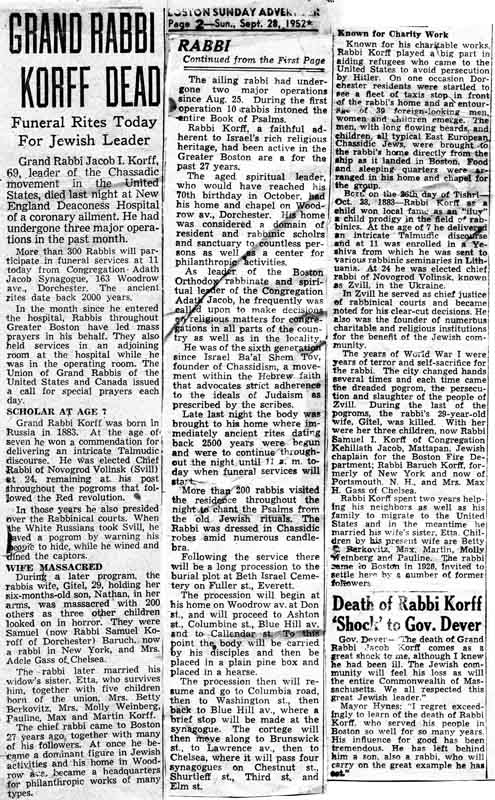 |
|
Rabbi Jacob Korff's death notices (click to enlarge) |
We have made every possible attempt to obtain the necessary
permissions to reprint these articles but could
not find the rights holders. Please contact us if you are a copyright holder.